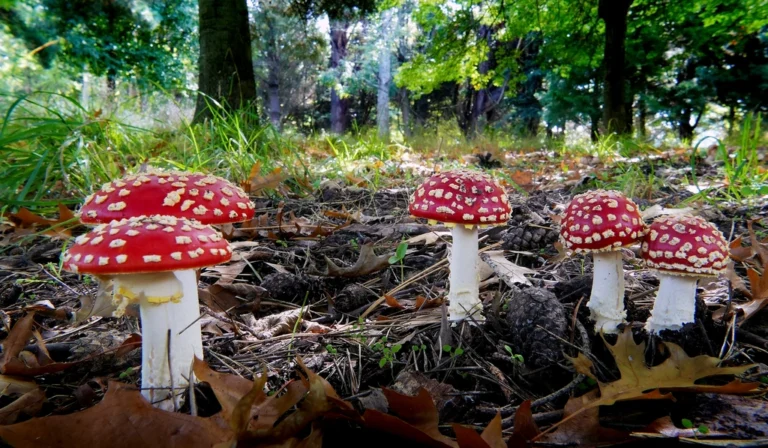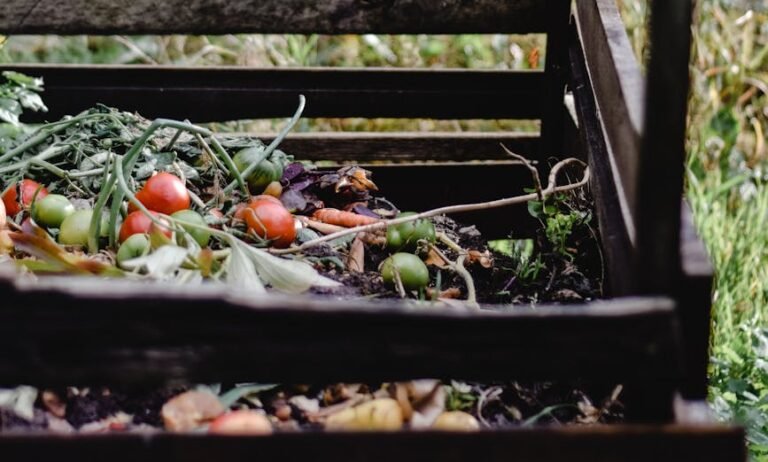In the intricate tapestry of nature, plants cohabit a world that is far more complex than we often realize. Among their many interactions, a remarkable phenomenon known as allelopathy stands out. Allelopathy refers to the chemical interactions between plants. Where one plant species releases substances into the environment that can hinder or promote the growth of surrounding flora. This reveals how plants communicate and compete, shaping ecosystems in ways that are both beautiful and intricate. This intricate process plays a vital role in agriculture and ecosystems alike. Dive into the mysterious world of allelopathy, where nature reveals its secrets and strategies for survival.
What is Allelopathy?
The term “allelopathy” originates from the Greek words “allos,” meaning “other,” and “pathos,” meaning “suffering.” Essentially, allelopaths are plants that can affect the growth, survival, and reproduction of nearby plant species through chemical means. These chemicals can be released into the soil, leaf litter, or even volatilized into the air.
At its core, allelopathy involves the production of allelochemicals. These plant produced compounds exuded by plants can influence the behavior of other plants. Thereby inhibiting or stimulating growth in neighboring plants, including their germination, growth, and survival rates. Allelochemicals can be released through various means: root exudates, leaf litter decomposition, or even volatile compounds emitted into the air. The process of allelopathy can serve multiple functions, from reducing competition for resources to facilitating nutrient uptake. This illustrates the complex relationships plants maintain within their environments.
Allelopathic interactions can be beneficial, neutral, or harmful, depending on the circumstances and the species involved. Some allelopathic plants can provide a competitive advantage by suppressing the growth of potential competitors. While others have a more symbiotic relationship with companion plants, promoting biodiversity in their environment.
The process of allelopathy is primarily through secondary metabolites, which include flavonoids, terpenoids, and phenolic acids. These substances can affect seed germination, root growth, and nutrient uptake, leading to altered plant community dynamics. Understanding allelopathy guides gardeners in cultivating compatible plant combinations that maximize growth and minimize pests.
The mechanisms at play include:
- Exudation: Some plants release allelochemicals through their roots, leaves, or decaying material.
- Volatilization: Certain compounds evaporate into the air, affecting nearby plants.
- Leaching: Rain or irrigation can wash chemicals from leaves or the soil, impacting plant interactions.
The role of allelopathy is critical for plant survival. By suppressing competitors, allelopathic plants gain an advantage, securing resources vital for their growth.

How Do Allelopathic Plants Operate?
The mechanisms through which allelopathic plants operate can be classified into different strategies. Some plants, like the black walnut (Juglans nigra), produce juglone, a toxic compound that leaches into the soil. Juglone inhibits the growth of many plant species in its vicinity, thus minimizing competition for sunlight, water, and nutrients. Others simply release beneficial compounds that enhance the growth of neighboring plants, creating a mutually advantageous relationship.
A fascinating aspect of allelopathy is the specificity of allelochemicals. Certain plants inhibit specific species while leaving others unaffected. For instance, the common sage (Salvia officinalis) produces compounds that suppress certain weeds while benefiting nearby flowering plants. This selectivity allows allelopathic plants to shape their communities, fostering relationships that can lead to greater ecological balance.
Moreover, allelopathy is not just a defense mechanism; it can also facilitate cooperation among plants. For example, some trees release substances that encourage mycorrhizal fungi to thrive in their root zones. Thereby, enhancing nutrient absorption for both the trees and neighboring plants. This polarity of competition and cooperation showcases the complexity of plant interactions and highlights an essential factor in ecological resilience.
The Role of Allelopathy in Agriculture
In the realm of agriculture, allelopathy offers exciting possibilities, for integrated pest management (IPM). Farmers and agronomists have begun harnessing the power of allelopathic plants to promote sustainable agriculture practices. By integrating allelopathic crops into rotation systems, farmers can reduce reliance on chemical herbicides, mitigate weed competition, and enhance soil health.
Cover cropping is one method that employs allelopathy effectively. Certain cover crops, such as rye (Secale cereale), are known for their allelopathic properties. When grown before cash crops, rye can suppress weeds through its allelochemicals. Allowing farmers to cultivate productive crops with minimized herbicide use. This strategy not only promotes eco-friendly farming but also enhances overall soil structure and fertility. Demonstrating the practical benefits of allelopathy in sustainable agriculture.
Research into allelopathy extends beyond weed management; it also investigates how these interactions impact soil microbiomes. Healthy soil ecosystems are crucial for optimal plant growth. So, understanding the interplay between allelopathic plants and the microorganisms in the soil can guide agricultural practices. Optimizing these interactions can lead to improved crop yields and healthier ecosystems.
The economic benefits of integrating allelopathic plants into agriculture are notable. Farmers can save money by eliminating chemical inputs while enhancing soil health and promoting biodiversity.

List of Common North American Allelopaths
North America is home to an impressive variety of allelopathic plants. Here’s a look at some key species known for their allelopathic properties:
- Black Walnut (Juglans nigra)
Black walnuts are notorious for their allelopathic effects due to the compound juglone. This compound can inhibit the growth of many plant species, particularly in the areas surrounding the tree. - Common Sage (Salvia officinalis)
Common sage releases chemicals that can deter weeds and promote healthy soil functions. It is often used in gardens for its culinary benefits as well as its allelopathic qualities. - Sunflower (Helianthus annuus)
Sunflowers can produce compounds that suppress the growth of various weed species. They are particularly effective in repelling nematodes, making them valuable for crop rotation practices. - Eucalyptus (Eucalyptus spp.)
Many Eucalyptus species are allelopathic, releasing oils that can inhibit the growth of understorey plants. This trait influences forest composition, often leading to monocultures in their native habitats. - Cypress (Cupressus spp.)
Cypress trees can produce toxic compounds that impact the germination and growth of nearby plants, promoting a specific ecosystem around them. - Mugwort (Artemisia vulgaris)
Known for its medicinal properties, mugwort can produce chemicals that impact neighboring plants’ growth. This can offer some control over weed populations in garden settings. - Wheat (Triticum spp.)
Certain wheat varieties exude allelochemicals from their roots that can suppress weed growth, enhancing their effectiveness in agricultural systems. - Ragweed (Ambrosia spp.)
Ragweed can release allelopathic substances affecting the germination and growth of other species, often complicating agricultural management. - Yellow Dock (Rumex crispus)
This perennial weed can inhibit the establishment of nearby plant species through its root exudates, showcasing the complexity of weed management. - Tree of Heaven (Ailanthus altissima)
Known for its invasive tendencies, this tree releases allelopathic chemicals that can prevent other plants from growing in its vicinity, contributing further to its spread.
Beneficial Allelopathic Plants: Nature’s Weed Control
Many plants exhibit allelopathic properties that can help in sustainable agriculture. Here are a few noteworthy examples:
- Black Walnut (Juglans nigra): It produces juglone, which inhibits the growth of several weeds.
- Sunflowers (Helianthus annuus): Their roots release compounds that can suppress certain grass species.
- Sorghum (Sorghum bicolor): Known for producing allelochemicals that effectively control weed growth.
Case studies highlight the success of these plants in agricultural settings. For instance, incorporating sunflowers in crop rotation has shown an impressive reduction in weed populations.

Harmful Allelopathic Plants: Challenges and Solutions
Not all allelopathic interactions are beneficial. Certain invasive species possess strong allelopathic properties that threaten biodiversity and crop yields. Examples include:
- Kudzu (Pueraria montana): Rapidly grows and out competes native plants, releasing inhibitory chemicals.
- Purple Loosestrife (Lythrum salicaria): Alters local ecosystems and affects aquatic habitats significantly.
The negative impacts of these plants are substantial. They can lead to decreased crop yields and loss of native species. Effective management strategies include:
- Mechanical removal: Manually pulling or cutting invasive plants.
- Restoration efforts: Planting native species that are resilient against invasives.
Companion Plants for Allelopaths
Understanding which plants make ideal companions for allelopaths can transform your garden or landscape into a thriving, balanced ecosystem. Here are some suggestions for companion planting with the aforementioned allelopaths:
- Black Walnut
While black walnut can inhibit many plants, it pairs well with certain fruits like raspberries and blackberries that are tolerant of juglone. - Common Sage
Sage thrives alongside other Mediterranean herbs such as thyme, rosemary, and oregano, which share similar growing conditions and can benefit from sage’s pest-repelling qualities. - Sunflowers
Sunflowers make great companions for beans and corn. Their height provides shade, while their allelopathic properties deter weeds from encroaching on the crops. - Eucalyptus
Good companion plants include clover, which can improve soil health, and various ground covers that tolerate the dry conditions and allelopathic effects of eucalyptus. - Cypress
Given cypress’s damp habitat preferences, companion plants like ferns and certain shrubs that thrive in wet zones can coexist harmoniously. - Mugwort
Mugwort pairs well with other aromatic herbs such as mint and chamomile, creating a sensory-rich garden space that deters pests. - Wheat
In a rotational system, planting legumes like clover or peas after wheat can enrich soil nitrogen levels while naturally managing weed populations. - Ragweed
Due to its invasive nature, ragweed should be managed carefully. However, plants like goldenrod, which can withstand its allelopathic effects, can coexist if managed wisely. - Yellow Dock
One option is to use yellow dock as a companion for dandelions. As both are resilient and can cohabitate. - Tree of Heaven
Tree of heaven can coexist with hardy species like sumac, which can handle the ecological impacts of its growth.
Whether you’re a seasoned gardener or a novice, integrating allelopaths with their companion plants can lead to a flourishing environment that benefits both plants and their caretakers.

The Future of Allelopathy Studies
As our understanding of allelopathy deepens, researchers continue to explore new avenues. Current studies are examining the potential of allelopathic compounds in environmental restoration strategies. Allelopathic plants might offer unique solutions to enhance resilience in ecosystems facing drought, invasive species, or habitat loss.
Furthermore, modern technology provides new tools for studying allelopathy. Advances in molecular biology and genomics allow scientists to identify and manipulate allelopathic traits in plants. This exploration could lead to the use of crops for specific agricultural challenges
Research is ongoing to understand how allelochemicals can help plants cope with stress. Key research trends include:
- Identification of allelochemicals: Scientists are working to isolate and characterize these compounds for practical applications.
- Field studies: Experiments in diverse environments yield insights into the effectiveness of allelopathic interactions.
Experts emphasize the importance of further research. Allelopathy could enhance sustainable agricultural practices and improve crop resilience.
Embracing the Potential of Allelopathic Interactions
Allelopathy is an intriguing aspect of plant biology that highlights the complex interactions within plant communities. Consider the delicate dance of competition and cooperation in nature. Learning which plants exert allelopathic effects and how to work with them in the garden, you can create a thriving ecosystem.
Exploring the intricate relationships among these botanical allies, we ourselves will better understand the delicate balance of our natural world. The wisdom of allelopathy can pave the way for healthier, more productive landscapes. Reaffirming our connection to the remarkable world of flora that surrounds us. Embracing these lessons will lead us toward a more resilient future. Cultivating a future where agriculture and ecology coexist harmoniously.
If you enjoy our content, please consider donating here:




